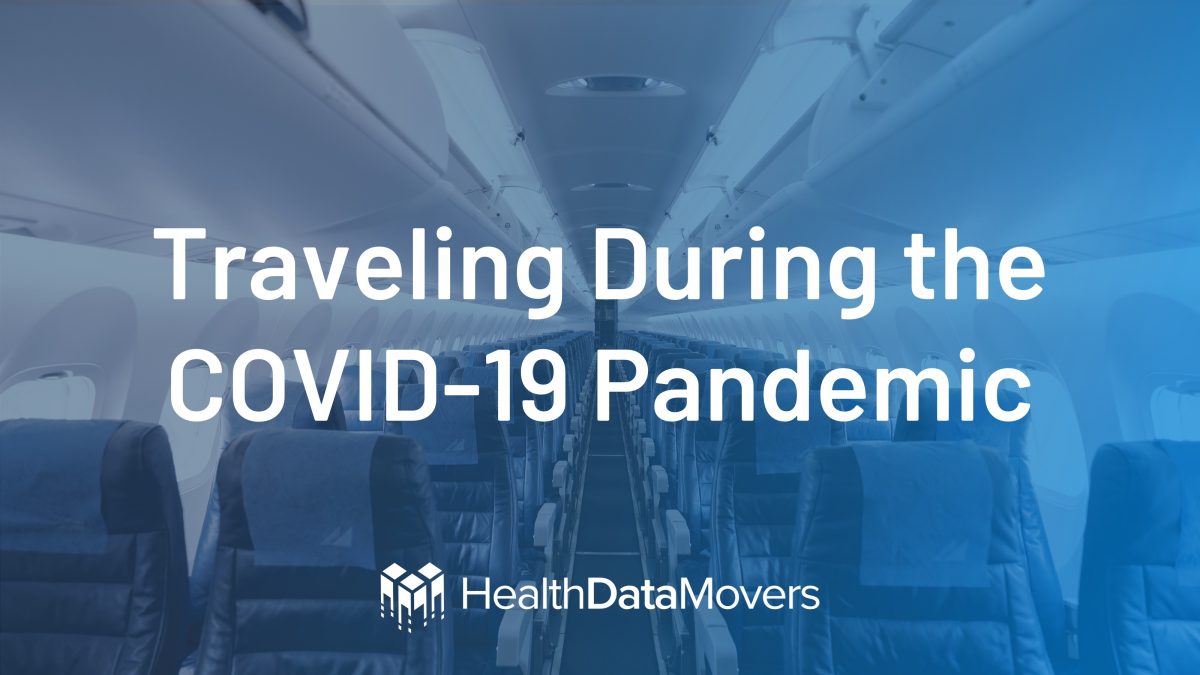As a consultant, I regularly fly from Chicago O’Hare (ORD) to San Francisco (SFO). COVID-19 put a stop to that routine until I was called to go on-site April 20, 2020, to assist with COVID-19 response projects. Here’s what travel is like during a global pandemic.
Booking
The first thing I noticed was the substantial decrease in flight options and the increase in price. Whereas United usually offered a flight from ORD to SFO once every hour between 6:00 a.m. and 8:00 p.m., options were now limited to only three flights spread from mid-morning to late afternoon at twice the usual price.
Travel Day
On travel day, instead of Lyft, my wife dropped me at ORD to avoid unnecessary exposure. I arrived at 5:00 p.m. and was immediately struck by the emptiness of the rideshare area.

As I went through the airport, everything was eerily quiet – there was no one checking in, and there was no line for TSA. I was confronted by an empty concourse replete with closed shops and closed restaurants. The majority of the people I saw in the concourse were employees, and I started to wonder if the airport was even open. Even boarding was weird: a flight that usually had fifty-plus passengers in priority boarding had only a dozen travelers.
The Flight
Boarding ended as fast as it started. I glanced around and noticed that of my thirty fellow passengers, half were United flight crews getting shuffled to accommodate new schedules. Passengers were spread across the plane for social distancing, and most wore face masks, albeit in a fashion that favored comfort over safety. The inflight services consisted solely of full bottles of water and a handful of pre-packaged snacks.
Four hours later, we landed in SFO and were greeted by the same eerily empty feeling as ORD. Whereas I would normally take a Lyft, I decided the safer decision was to rent my own car, and made my way to the Car Rental Center which was teaming with vehicles, but not drivers. Finally alone in my (upgraded) rental car, I was able to take off my sweaty face mask for the first time in six hours.
Three Weeks Later
On May 11, 2020, I had to make another trip. This time I felt better prepared. However, within just a few weeks, the new normal had changed again. Prices were much closer to what I’d typically paid pre-COVID-19, and while the activity outside of the airport was still slow, the interior had a slight bustle.
As I made my way through the airport to my gate, what struck me was the lack of masks: only eighty percent of passengers and two-thirds of TSA agents were even wearing them. This struck me as a glimmer of hope that maybe the new normal would not be as permanent as expected. Even though more people were traveling than last time, the stores were still closed, and the open restaurants were overwhelmed. I stopped at McDonald’s (one of two open restaurants in the terminal) on my way to the gate. The line to order was relatively short, but it took them almost twenty minutes to make the meal.
Once I finally got my meal, I ran to the gate, one of the last to make it onboard. I was greeted at the plane with a hand sanitizer wipe. This was a pleasant gesture, and it made me feel comfortable that I could wipe down my seat. To support social distancing, United had reserved all middle seats, so while this flight was not nearly as empty as last time, there was still extra space. I found out later that United had changed boarding as well: flights now board five rows at a time, back to front (and vice versa when deplaning).
Four hours later we landed in SFO. SFO had the same feel as ORD: not busy, but certainly not empty. The Car Rental Center reflected the same feeling: not an empty lot, but certainly not as many cars available as the last trip.
Your Next Trip
As you prepare for your next trip, it’s important to remember that it will be different from traveling pre-COVID-19. In this era of rapid change, it may even be different from your last trip. Here are a few recommendations that should be helpful for the coming months:
- Come up with a logistics plan for getting to and from the airport to reduce exposure risk. Think about riding with friends/family, renting a car, etc. If you have to take Uber, Lyft, or public transit, think about how to reduce exposure in these situations.
- Assume that airport restaurants may not be open and plan meals accordingly. Remember, you can’t bring a hamburger through TSA, so try to eat before you start your trip or bring dried food that you can carry onboard.
- There are many things that are touchless now. However, consider bringing hand sanitizer for the things you have to touch and masks for the terminal and airline.
Author
Chris Wentland
Senior Consultant
chris.wentland@healthdatamovers.com


